How Fast Were Viking Longships?
How Fast Did Viking Longships Sail? While modern replicas offer us good evidence for the top speeds of Viking longships, it remains a debatable subject.
In The Two Lives of Charlemagne, by the biographer Notker the Stammerer, we encounter a deeply troubled Charlemagne who witnessed an unusual event in southern France. A fleet of Northmen sailed up the coast to raid but seeing a garrison of Franks stationed where they had hoped to strike, they fled. The Franks sent a fleet to pursue them but could not match the Northmen’s speed. Notker tells us Charlemagne recognized the imminent threat of the Vikings on his empire when he said, “I do not fear that these bandits will do me any harm; I am sick at heart to think that, even in my lifetime, they dared to attack this coast, and I am horror-stricken when I think of the harm they will do to my descendants and their subjects.”
Already in his lifetime, we learn that the Vikings’ longships had a reputation for sailing much faster than those of the Franks. The longship was an innovation that struck terror in the hearts of their victims, and it has become a symbol synonymous with the Viking Age. Yet, for all the contemporary testimonies about their speed, historians and archeologists struggled for a long time to determine how fast a longship might have sailed. Not until modern reconstructions put their theories to the test did they manage to estimate longship speeds, and even then, there are factors that may have affected speed for which they cannot account.
The Viking Ship Museum in Roskilde, Denmark, has built five reproduction longships based on those they have found in recent years, and they have put them all to the test. Theirs is one of the most educational efforts to assess the speed with which the Vikings might have sailed. Below are the four best longships among the five they’ve reconstructed and the information the museum lists about them:
Skuldelev 1 - The Ocean-Going Trader
Ottar: Skuldelev 1. Photo Credit: The Viking Ship Museum.
Skuldelev 1 is a sizeable ocean-going cargo ship from Sognefjord in western Norway. The vessel is built of heavy pine planks and has a rounded form that gives it a high loading capacity and exceptional seaworthiness on the North Atlantic. It was repeatedly repaired with oak in Norway and Denmark. The ocean-going trader could have sailed all over the North Sea and the Baltic as well as in the North Atlantic. The ship and its cargo may have been owned by a chieftain or a group of merchants sailing it on trading expeditions. The vessel had decks fore and aft as well as an open hold.
Age: ca 1030
Length: 15.84 meters Breadth: 4.8 meters
No. of oars: 2-4
Crew: 6-8 men
Sail area: 90 m2
Average speed: 5-7 knots Top speed: ca 13 knots
Skuldelev 2 - The Great Longship
The Sea Stallion from Glendalough: Skuldelev 2. Photo Credit: The Viking Ship Museum.
Skuldelev 2 is a warship built to carry warriors at high speed from place to place. With a crew of 65-70 men, it was owned by a chieftain or king, like those evoked in the sagas. Tree-ring analysis of the timber shows that the ship was built in the mid-10th century and was likely used to ferry soldiers across long distances, such as to England, Ireland, and France.
Age: ca 1042
Length: approx. 30 meters Breadth: 3.8 meters
No. of oars: 60
Crew: 65-70 men
Sail area: 112 m2
Average speed: 6-8 knots Top speed: 13-17 knots
Skuldelev 3 - The Coastal Trader
Roar Ege: Skuldelev 3. Photo Credit: The Viking Ship Museum.
Skuldelev 3 is a small, elegant, and sturdy trading ship built for carrying goods across Danish coastal waters and throughout the Baltic. The vessel is the best preserved of the five Viking ships found in the Roskilde Fjord and was built with Danish oak. It had decks of loose planks fore and aft and an open hold with room for about 4 tons of cargo. The ship may have been used when the owner and his associates or family traveled to a market or meetings at the assembly.
The wind was the most important means of powering the ship, but the oars could be used when maneuvering or traveling short distances in calm weather.
Age: ca 1040
Length: 14 meters Breadth: 3.3 meters
No. of oars: 5
Crew: 5-8 men
Sail area: 45 m2
Average speed: 4-5 knots Top speed: 8-10 knots
Skuldelev 5 - The Small Longship
Helge Ask: Skuldelev 5. Photo Credit: The Viking Ship Museum.
Skuldelev 5 is one of the smallest longships and was likely used as part of a war fleet. It was ideal for sailing in Danish coastal waters and through the short, choppy waves of the Baltic. Unlike the other Skuldelev ships, it was built and repaired with new and recycled timber. We do not know how old the ship is exactly, but researchers think it was likely used for a long time and repurposed many times over its life.
Breadth: 2.5 meters
No. of oars: 26
Crew: 30 men
Sail area: 46 m2
Average speed: 6-7 knots Top speed: 15 knots
Draken Harald Harfagre
Construction of the 35 m long Skeid longship Draken Harald Hårfagre
The Draken Harald Hårfagre is the largest reconstruction ever built and has sailed across the Atlantic as far as New York. The project was meant to create a ship based on the descriptions of the largest longships found in the sagas combined with the building techniques discovered in actual burial ships. The website for the Draken Harald Hårfagre warns, “Draken Harald Hårfagre is a clinker-built Viking longship. She is not a replica of a known ship, she is a reconstruction of what the Norse Sagas call a ‘Great ship.’ Knowledge of history, especially the Norse sagas, archeological findings, and Norwegian boatbuilding traditions, combined created the world’s largest Viking ship, sailing in modern times.”
It is essential to understand that this ship is not the best source for understanding the speed of the longships of the Viking Age because it is not a replica of a known ship and is much larger than any of the ships ever found. However, the experiment has shown us a profound trend: bigger does not equal faster. The top speed recorded for the Draken Harald Hårfagre is 14 knots, a full three knots shy of the Skudelev 2’s top speed. While an impressive ship, its size negatively affects its top speed and maneuverability.
Top Speeds vs. Actual Navigation
Understanding the longship’s top speed makes for sensational headlines, but sailboats rarely travel at their top speed. A more recent adventure carried out by the Roskilde Ship Museum involved sailing their small longship fifty nautical miles across the Danish Archipelago. It took them twelve hours with an average speed of four knots. The test case showed that the Vikings may not have moved around as swiftly as the sagas and chronicles relay to us in the real world.
How fast did Longships sail?
How Fast Did Viking Longships Sail? While modern replicas offer us good evidence for the top speeds of Viking longships, it remains a debatable subject. Replicas have topped 17 knots in ideal weather, but most sail in the 8-12 knot range. Some historians have proposed ships built in the Viking Age may have reached 24-25 knots, but no modern replica, to my knowledge, has attained such speeds. Considering speeds of 24-25 knots are extremely difficult and rare even for modern sailboats, as well as sailboats with two hulls, it is highly unlikely Viking longships reached such speeds. 8-12 knots is not a slow pace, particularly when compared with the much slower Carolingian cogs. What we can say for certain is that longships were significantly faster than other ships of their day and may have been comparable to modern sailboats in speed, but they would not have broken any modern speed records.
In relation to my historical novel writing, I am constantly questioning myself on how long it should take my characters to traverse certain distances. I imagine various weather patterns, obstacles, and terrain issues, among other things, to estimate sailing times. Where I tend to lean on my estimates is in line with the four knots average, sometimes quicker, sometimes slower, depending on what I decide to throw at my characters.



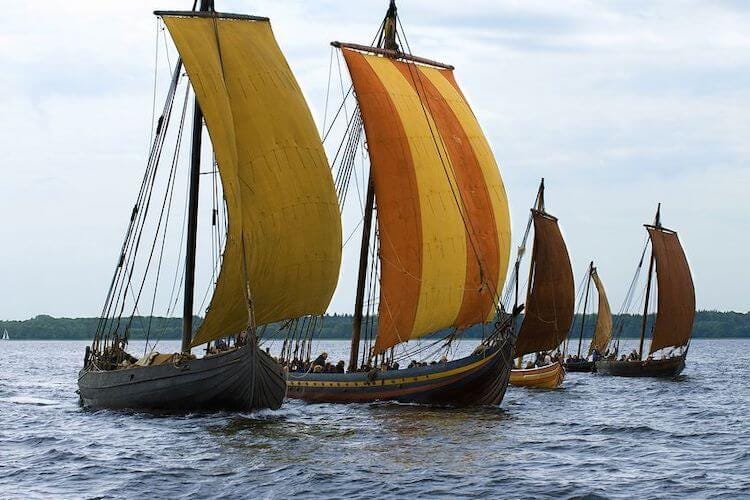
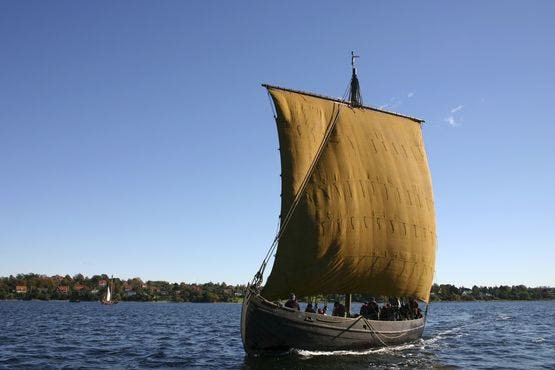
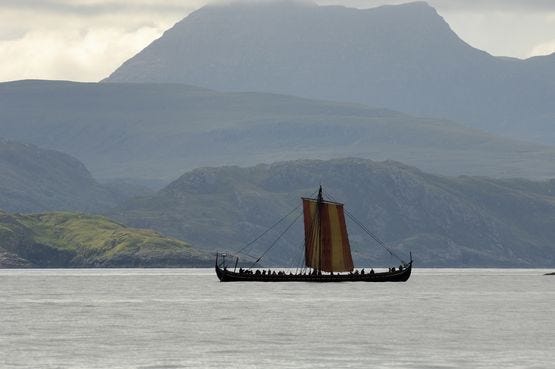
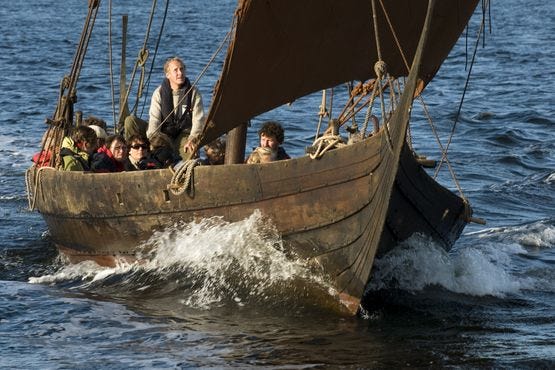
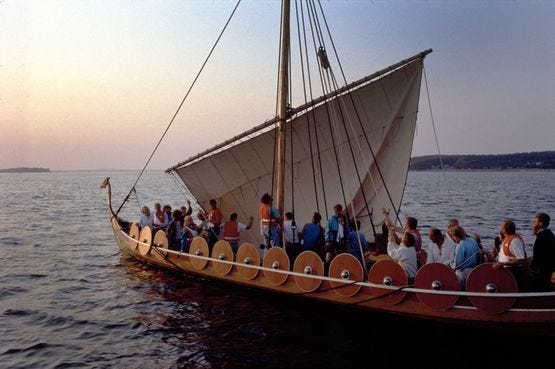
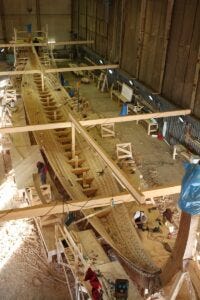

Thanks for this post, CJ. Because it’s concerning my favourite topic (Viking longships) I thoroughly enjoyed your analysis and, having once worked for a local timber-built sail training ship understand that speed is a very variable thing depending on prevailing conditions - especially in the days long before back-up engines to help making port on time!